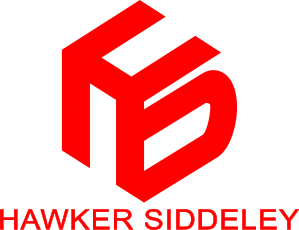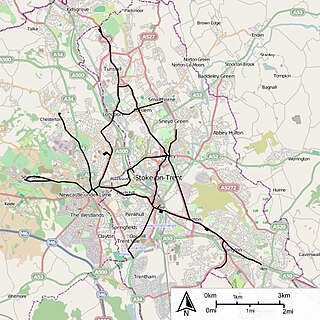Related Research Articles

Hawker Siddeley was a group of British manufacturing companies engaged in aircraft production. Hawker Siddeley combined the legacies of several British aircraft manufacturers, emerging through a series of mergers and acquisitions as one of only two such major British companies in the 1960s. In 1977, Hawker Siddeley became a founding component of the nationalised British Aerospace (BAe). Hawker Siddeley also operated in other industrial markets, such as locomotive building and diesel engine manufacture. The company was once a constituent of the FTSE 100 Index.

D0280 Falcon was a single prototype diesel-electric locomotive, built for British Railways in 1961. It was one of a series of three prototypes: Falcon, DP2 and Lion, eventually leading to the Class 47 and Class 50. A requirement was expressed by the BTC at a meeting on 15 January 1960 for new Type 4 designs of Co-Co arrangement, which would be lighter than the earlier 1Co-Co1 locomotives such as the Peak classes, produced under the Pilot Scheme.

The British Rail Class 89 is a prototype electric locomotive. Only one was built, in 1986, by British Rail Engineering Limited's Crewe Works. It was used on test-trains on both the West Coast and East Coast Main Lines. The locomotive was fitted with advanced power control systems and developed more than 6,000 bhp. After being withdrawn in 1992, it was returned to service in 1996, before being again withdrawn in 2000. As of January 2021, it is in the final stages of an overhaul that will return it to the main line.

The British Rail Class 47 or Brush Type 4 is a class of diesel-electric locomotive that was developed in the 1960s by Brush Traction. A total of 512 Class 47s were built at Brush's Falcon Works in Loughborough and at British Railways' Crewe Works between 1962 and 1968, which made them the most numerous class of British mainline diesel locomotive.
Brush Traction is a manufacturer and maintainer of railway locomotives in Loughborough, England. It is a subsidiary of Wabtec.

The Hunslet Engine Company is a locomotive-building company, founded in 1864 in Hunslet, England. They manufactured steam locomotives for over 100 years, and currently manufacture diesel shunting locomotives. The company is part of Ed Murray & Sons.

HS4000 Kestrel was a prototype high-powered mainline diesel locomotive built in 1967 by Brush Traction, Loughborough as a technology demonstrator for potential future British Rail and export orders. The locomotive number is a combination of the initials of Hawker Siddeley and the power rating of its Sulzer diesel engine, making it the most powerful locomotive built by the company.

The British Rail Class D2/11 was a British class of locomotive designed in 1958 by Brush Traction and Beyer, Peacock & Company, which co-operated to produce five prototype diesel-electric shunting locomotives of 0-4-0 wheel arrangement. They were intended to demonstrate a new generation of diesel shunters for industrial and mainline use. Two were loaned to British Railways for trials and one, number D2999, was subsequently purchased by BR. However, no large scale orders resulted from these demonstrators.

Crossley, based in Manchester, United Kingdom, was a pioneering company in the production of internal combustion engines. Since 1988 it has been part of the Rolls-Royce Power Engineering group.
Petters Limited, were a maker of stationary petrol and diesel engines from 1896 onwards. In 1915 Petter founded Westland Aircraft Works. In 1986 Petters Limited merged with one-time rival R A Lister and Company to form Lister Petter.

The British Rail Class 60 is a class of Co-Co heavy freight diesel-electric locomotives built by Brush Traction. They are nicknamed Tugs by rail enthusiasts.

Richard Hornsby & Sons was an engine and machinery manufacturer in Grantham, Lincolnshire, England from 1828 until 1918. The company was a pioneer in the manufacture of the oil engine developed by Herbert Akroyd Stuart, which was marketed under the Hornsby-Akroyd name. The company developed an early track system for vehicles, selling the patent to Holt & Co. in America. In 1918, Richard Hornsby & Sons became a subsidiary of the neighbouring engineering firm Rustons of Lincoln, to create Ruston & Hornsby.

British Railways 10800 was a diesel locomotive built by the North British Locomotive Company for British Railways in 1950. It had been ordered by the London, Midland and Scottish Railway in 1946 but did not appear until after the 1948 nationalisation of the railways.
British Rail Class D3/14 was a diesel-electric locomotive built by the London and North Eastern Railway at its Doncaster Works. It had a Petter engine, and Brush Traction electricals. It was absorbed by British Railways on nationalisation, but was withdrawn in the pre-TOPS era.
Lister Petter is a British company that manufactures internal combustion engines for industry, a subsidiary of Teignmouth, England based Sleeman and Hawken.

J&H McLaren was a British engineering company in Hunslet, Leeds, England, that manufactured traction engines, stationary engines and later, diesel engines.

Brush Electrical Machines is a manufacturer of electrical generators typically for gas turbine and steam turbine driven applications. The main office is based at Loughborough in Leicestershire, UK.
Priestman Brothers was an engineering company based in Kingston upon Hull, England that manufactured diggers, dredgers, cranes and other industrial machinery. In the later 1800s the company also produced the Priestman Oil Engine, an early design of oil fuelled internal combustion engine.

Coventry Corporation Tramways operated a tramway service in Coventry, England, between 1912 and 1940.

The Potteries Electric Traction Company operated a tramway service in The Potteries between 1899 and 1928.
References
- ↑ "The History of the Petter Engine". December 2001.
- ↑ "History of Brush Traction". Archived from the original on 10 February 2009. Retrieved 9 February 2016.